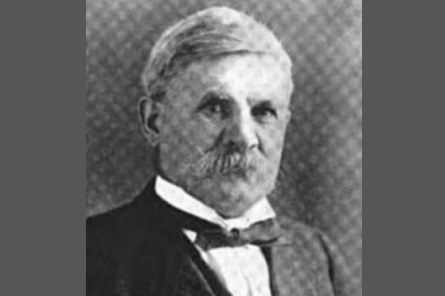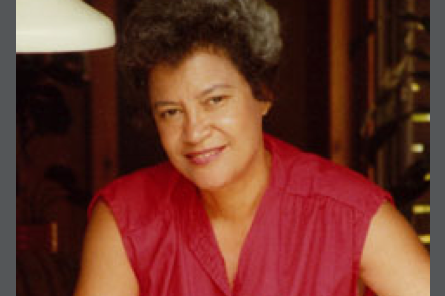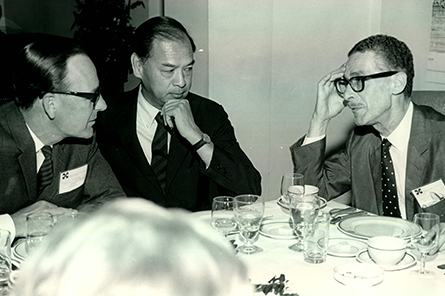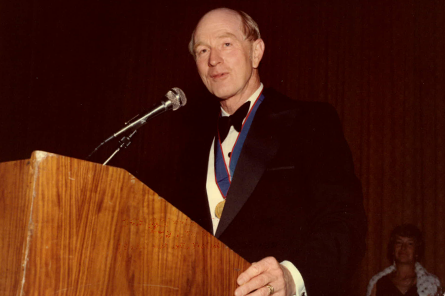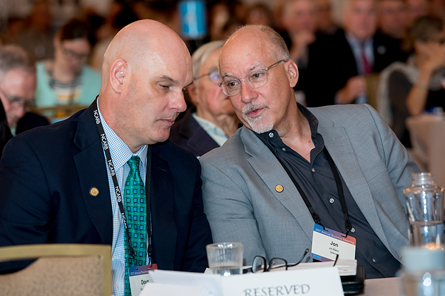California
Law Passed: 1901 • Joined NCARB: 1921 • Region 6—Western (1964)
The Components of Licensure
Education
1985: The board requires a total of five years of educational equivalents. This requirement can be met in any of the following ways:
- By obtaining a degree in architecture from a program accredited by the NAAB or the Canadian Architectural Certification Board (CACB).
- By a combination of a non-accredited degree in architecture or other discipline plus work experience under the direct supervision of a licensed architect
- By work experience under the direct supervision of a licensed architect.
Experience
Pre-1946: Board requires 10 years of experience, including five years of education or an educational equivalent.
1946: Experience requirement is reduced to seven years, including five years of education or an educational equivalent.
2005: The board implements the IDP (now AXP), along with an evidenced-based overlay.
2012: California no longer requires the evidence-based experience supplement.
Examination
1966: California begins administering the national examination administered by NCARB.
1986-87: The board decides to prepare and administer its own examination, the California Architect Licensing Examination (CALE)
1989: The board creates a new oral exam, the California Supplemental Examination (CSE), that is given in addition to the CALE.
1990: The ARE is determined to be comparable with the CALE; the CALE is discontinued and candidates are required to pass the ARE.
2011: The CSE is converted to a computer-delivered, multiple-choice examination beginning in February 2011.
Noteworthy
Governor Henry Gage created the California State Board of Architecture in 1901, appointing 10 architect members to the board.
Initially, individuals who could satisfactorily demonstrate to their district board that they were practicing architecture in California as of March 23, 1901, and who were in good standing, could apply for certification with the board without examination. Six months after the approval of the act, it became unlawful to practice architecture or call oneself an architect in the state of California unless certified by the board. However, the act made a significant exemption to this rule by allowing individuals to prepare plans, drawings, specifications, instruments of service, or other data for buildings, provided that the individual fully informed the client in writing that they were not an architect. This exemption made the act a quasi-title act instead of a true practice act. In 1963, the act was revised to make the practice of architecture by an unlicensed individual a misdemeanor. This revision made the act a true practice act, restricting the practice of architecture to only licensed architects.
In 1929, the board’s name was changed to the California State Board of Architectural Examiners. The board was renamed the California Architects Board in 1999. Since 1997, the board has also overseen the Landscape Architects Technical Committee.
The board has a strong record of innovation—California was the first architect registration board in the nation to develop a Building Official Information Guide, Disciplinary Guidelines for prosecutors, and a Consumer’s Guide to Hiring an Architect. With an eye on the future of the profession, the board developed architect.ca.gov, a board-sponsored career website, which serves as a convenient resource for high school and college students interested in a career in architecture.
Notable People
NCARB Presidents
1933: A. M. Edelman, AIA (Los Angeles)
1943-44: Louis J. Gill, FAIA (San Diego)
1966: C. J. “Pat” Paderewski, FAIA (San Diego)
1980: John R. Ross, FAIA (San Luis Obispo)
Additional Members of the NCARB Board of Directors
1921-26: Sylvian Schnaittacher (San Francisco)
1928-29: Myron Hunt, FAIA (Los Angeles)
1967-70: Worley K. Wong, FAIA (San Francisco)
2010-2012 & 2017-Present: Jon Alan Baker, FAIA (San Diego)
First Chairman/President
1901: Octavius Morgan, FAIA (Los Angeles)
First Board Members
Seth Babson (San Francisco)
W. M. Curlet (San Francisco)
Lionel Deane (San Francisco)
W. S. Hebbard (San Diego)
Sumner P. Hunt (Los Angeles)
John P. Krempel (Los Angeles)
Merritt J. Reid (San Francisco)
Fred L. Roehrig (Los Angeles)
H. A. Schulze (San Francisco)
First Female Board Member
2003-07: Norma Merrick Sklarek, FAIA
First License Issued
1901: Octavius Morgan, FAIA
First African-American Woman Licensed
1962: Norma Merrick Sklarek, FAIA
NCARB President Medalists
1995: Betty Landess, AIA (Los Angeles)
2001: Stephen P. Sands (Sacramento)
2015: Denis A. Henmi, FAIA (San Francisco)
2016: Jon Alan Baker, FAIA (San Diego)
